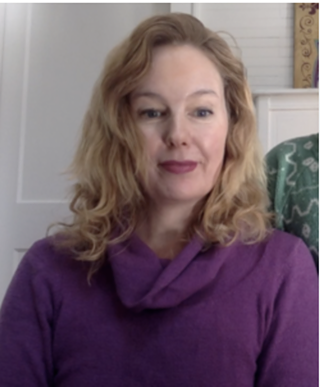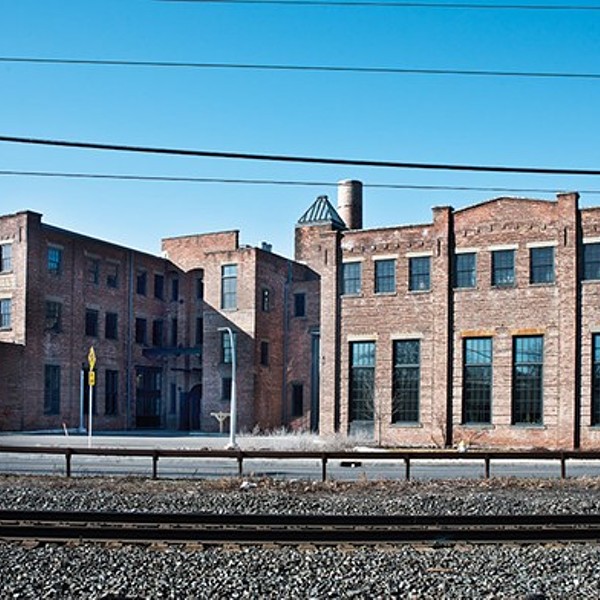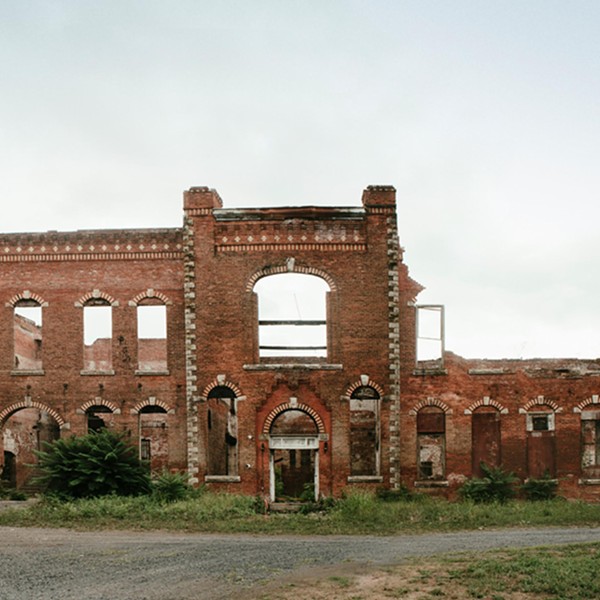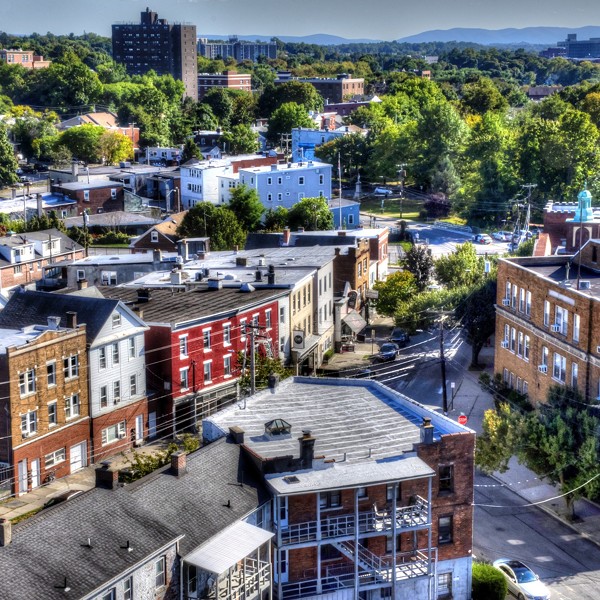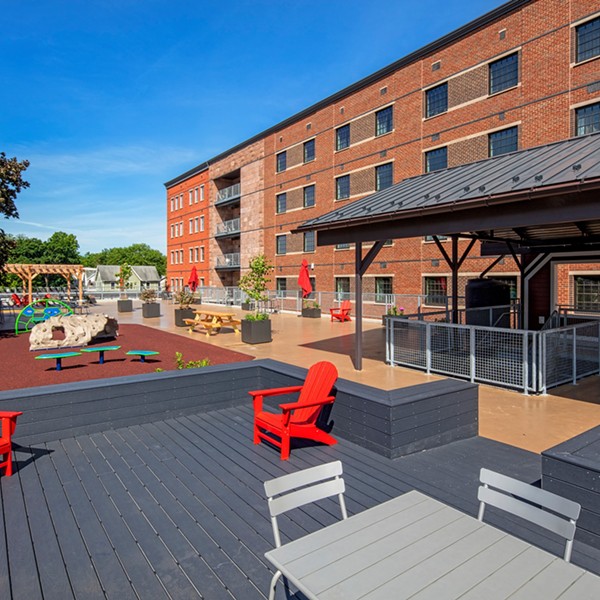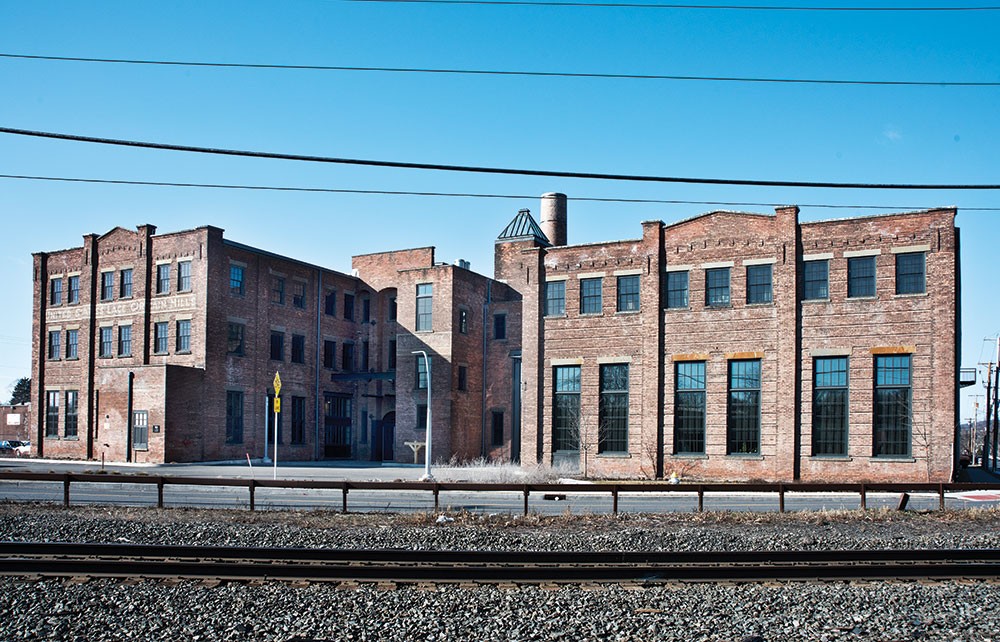
Once the US Lace Curtain Mill, the 1903 factory had been employed as a warehouse over the past decade and fallen into general disrepair. In 2013, RUPCO bought the 70,000-square-foot brick building and began creatively repurposing the space into 55 rental units of artist housing and multiple shared community spaces all of varying size, shape, and detail. After a year and a half of occupancy, the Lace Mill is growing into a dynamic center of creative combustion. It's a place where painting, music, the literary arts, and technology all overlap and commingle—spurring the residents within and the surrounding neighborhood to new creative heights.
The Collaborative Edge
"We called ourselves the three-legged stool." Scott Dutton, the project's lead architect, describes the partnership he formed with RUPCO director Chuck Snyder and the project's construction manager, Keith P. Libolt of Affordable Housing Concepts. "We were a team—a triangle—with a fixed amount of money and time. Every week we met, went over the budget, and adjusted with the changes. Over the 15 months of construction it was a constant collaboration. But the project was richer because of it."As the buildings were being constructed, RUPCO began accepting applications from potential residents (they received five times the amount of applications as the spaces available). Like other RUPCO projects, income was part of the qualifying criteria, but they also assembled a panel of local artists to interview applicants. "We asked applicants to demonstrate a commitment to their work," says RUPCO VP of Community Development Guy Kempe. Next, the panel asked applicants: "What kind of contribution do they want to make to the Lace Mill community?" RUPCO didn't rule out any medium, welcoming everyone from craftspeople to poets to media artists to sculptors and jewelers to apply. "We tried to be expansive," Kempe explains. "It was all part of our strategy to create a vital artist's community." The final residents were selected by lottery and assigned apartments randomly. Leases are reviewed every year, but there is no end date or proscription to the arts represented.
The RUPCO team secured grants and received tax credits to preserve the historical nature of the property. The also had the building listed with local and state historical registers. The goal was not only to protect the building's original architecture but also to honor its rich history by incorporating many of the original factory details into the current design. Those juxtaposed needs—between history and the day to day—added challenges but also resonance to the project. "On one hand," says Kempe, "we understood that what we were assembling was going to be a living, breathing, changing, dynamic thing; at the same time we also have an obligation to preserve and protect this building."
After a year and a half, Kempe is seeing the positive results of their careful planning and hard work. "The artists that live here arrived with the expectation of making an investment to the community," he notes. Dutton sees a historical through-line. "I love how the building connects the present to the past: The original workers were people who made art—they made intricate lace fabrics. They were craftspeople. Now, the place is full of makers again."
Just Kids
Inside the complex, each apartment is a collaboration between the building's history and potential. This distinctive interior design has been a boon to Chelsea Culpepper, Aaron Lockhart, and Daniel Cardenas, who all have apartments in the building. "Basically we make sculptures together, as well as drawings and paintings," says Culpepper, "and videos—our work is a melting pot." All three have jobs in the surrounding arts district, and convene most evenings to collaborate on projects. Culpepper's first-floor, corner apartment, where the lofted living room abounds with light and the concrete floors allow them to "make a mess" is their current favored work space.Culpepper and Lockhart originally met at the University of Alabama, where both received BFAs. After a brief stint in the city, they found Kingston. That's where they met Cardenas, who had just received a BFA from SUNY Purchase. The three hit it off right away. "We were all on the same page as far as art goes," says Lockhart. Before the Lace Mill, the three shared a house in the Kingston Rondout where they often found themselves preparing elaborate birthday celebrations for one another as well as bon voyage and welcome back parties. Then, explains Cardenas,"we started collaborating and gave ourselves permission to play."







